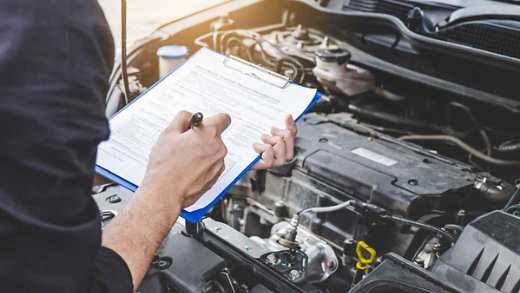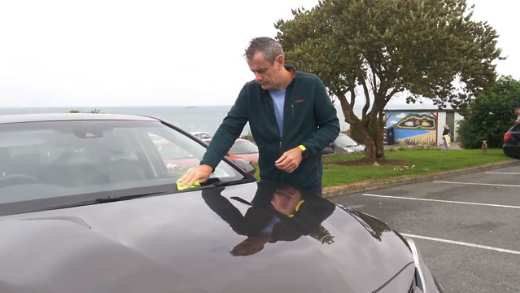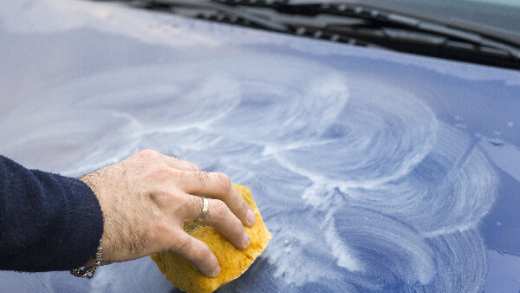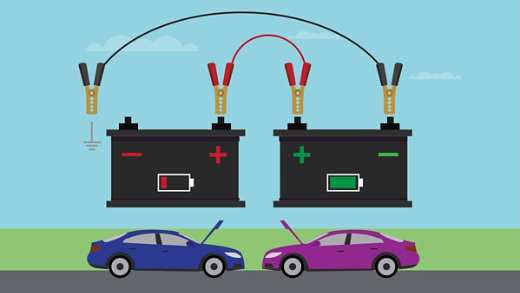Is your car leaking oil? Maybe coolant, or any other type of fluid you don’t quite know what it is? From oil and water to battery acid and brake fluid, your car needs a whole lot of fluids to maintain top performance – which means a leak is something that requires your immediate attention.
Most leaks occur because of normal wear and tear, and it’s almost inevitable that every driver will experience some type of fluid leak at some point along the way. While some car leaks can be relatively minor, others can immediately render your car unsafe to drive; knowing how to diagnose an issue and how to deal with it, is of vital importance.
How do you identify a leak in your vehicle? We’ve created a guide of the most common issues so that you’ll know what you’re dealing with the next time you spot a leak under the car and a puddle in the driveway...

Car leaks: the most common types
Car leaking oil
Ranging in colour from yellow if it’s been recently changed to dark brown or black if it’s been a while, the first way and most obvious way to spot an oil leak is if a pool appears under the front section of your car while parked. If the leak occurs while driving, it is of course harder to notice and that’s why it’s important to pay attention if you begin to smell a strange odour while driving. When your engine is cool and the car is parked, check your level on the dipstick, and fill to the correct level; if you find that it’s losing oil at speed or with frequency, then it’s time to visit a mechanic.
Car leaking coolant
Greasy and slimy, and usually coloured with bright greens, pinks or yellows, this substance is used to prevent your engine from overheating – which means it’s vital! It will appear under the front section of your car, and if it’s the case that you’re losing coolant, you’ll need to address it immediately; overheating can ruin a car’s engine.
Car leaking transmission fluid/gearbox oil
Coloured yellow-brown and typically found near your wheels, a potential leak of brake fluid is a very serious issue; if you spot it, you should have your car towed to a garage as driving could be extremely dangerous. Look at what to do in the event of a breakdown.
Car leaking power steering
Used to lubricate your car’s gearbox (transmission fluid for automatics, gearbox oil for manuals) and located towards the front of your car, you’ll see dark spots beneath where you parked if it’s leaking – but you might spot a giveaway before that. Grinding gears and clunking sounds will often accompany an issue, so keep your ears open for a sign that you might be running low.
Car leaking power steering
Reddish in colour and extremely thin, a leak could see your steering performance reduced dramatically. If you see this fluid, located at the front of your vehicle, it’s a sign that you need to consult with a professional immediately.
Car leaking battery acid
The most notable giveaway that you may be leaking battery acid is the smell; a strong, sulphur odour that’s hard to miss. If you suspect that’s what you’re dealing with, resist the urge to inspect for yourself; the liquid is highly caustic, and any damage means you’re more than likely going to have to have your battery replaced anyway.
Car leaking fuel
Most people will know the smell of fuel – and while it’s largely colourless when spotted on the ground, you’ll see the rainbow sheen of its reflection too. Because it’s highly flammable, and leaks can occur between the tank and the engine, it’s imperative to get any potential problem seen to by a professional, as soon as possible.
AdBlue
AdBlue is a liquid added to diesel cars that reduces the harmful emissions they can create, this is topped up regularly by the driver. If AdBlue were to leak it would be identifiable as a clear liquid with a slightly greasy feel, any residue on the ground would develop a white crystal effect over time. Any leak would also be evident in an increased AdBlue consumption. This would generally require a visit to a garage for repair.
Air Conditioning - A leak that is meant to leak!
The vehicles air conditioning system will produce condensation this is often confused for a leak but is normal. This would be identified as clear water consistently dripping from the centre of the vehicle this is evident if a vehicle is left idling for a period of time with the air conditioning on. This is especially common on warm days.
How to know if you have a car leak
Remember that you’re not always going to see water leaking under the car, or marks on the ground to alert you to a possible leak. While inspecting the area around and beneath your car is certainly a good idea, it’s recommended you keep your senses sharp:
- Always listen for strange noises as you drive, which may be an indicator of something being amiss.
- Look out for your dashboard’s warning lights. They’re designed to alert you to important issues, so don’t ignore them; if you don’t know what one of them means, consult your vehicle’s manual.
- A strange smell can often be a sign of fluids burning off, so take note of any unusual odours coming from your car.
- If you feel something is off when braking, steering, or shifting gears, it could be a sign that you’re out of fluid.
You’ll also be far more likely to notice something going awry if you regularly check your fluid levels. Motoring expert Bob Flavin included this when giving his recommendations when it comes to car maintenance.
At Aviva, we offer 24/7 breakdown assistance as standard with our car insurance simply call 1800 44 88 88. If you notice a fluid leak and are unable to drive your car, no matter where you find yourself in Ireland, we’ve got you covered should you need it. Avail of a 15% discount1 when you buy your car insurance online. Get your quote today.
We encourage our customers, where possible, to make use of our online options to access any help you need. If you have a query, you can reach us via our contact forms. MyAviva is an online self-service portal available to all our home and car insurance customers.















